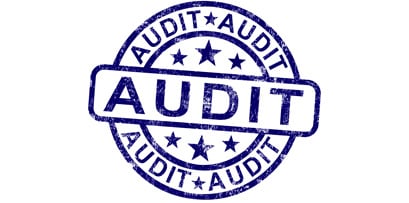As marketers, you want to stay on top of your game, keeping your content, calls-to-action, landing pages, etc., updated as technology and internet marketing keeps changing and advancing. Right now is the time to be going through your website and looking for ways to improve your marketing for the coming new year. Along with doing a website analysis and setting new marketing goals, doing a website audit is another great marketing action to take.
 Doing a website audit will show you what you currently have on your website, and areas where you can improve – with the end goal of transforming your website into a top of the line marketing machine. A website audit should be performed once a year. If you are continually making changes and adding pages to your website, auditing every 6 months is recommended.
Doing a website audit will show you what you currently have on your website, and areas where you can improve – with the end goal of transforming your website into a top of the line marketing machine. A website audit should be performed once a year. If you are continually making changes and adding pages to your website, auditing every 6 months is recommended.
Performing the Audit
To start the website audit, identify the most visited website pages and start with the top 10. It’s also important to note that an audit doesn’t need to be completed within a few days or in a week – go through the website at a pace that suits you. When you’ve listed out the top 10 pages, there are 5 categories of auditing that need to be examined:
1. Content:
- Check grammar and spelling
- Look at paragraph density
- Use bolding and headlines
- Have bulleted lists
- Create whitespace
- Add images to support content
- Keep important content above the page fold
2. Design:
- Continuity between text and images
- Have links guiding from page to page
- Have consistent design and template
- Incorporate whitespace
- Use consistent fonts and color styles
- Have header, content, and footer
- Include bolding and headlines
- Special Notes:
- Look at your page from a distance to ensure you can see different sections and whitespace so that it isn’t cluttered and overwhelming
- Consistency is key
- Blog design should be consistent with the rest of the website – the header can be different though, related to each blog
3. Lead Generation:
- Check the number, placement, and relevancy of calls-to-action
- Have Calls-to-Action (CTAs) on every page
- Have a blog subscription CTA
- CTAs should be compelling, action-oriented, and stand out
- Lead generation is educating those interested in your business and providing them with content they want to download that will help them solve problems with provided solutions.
4. Search Engine Optimization (SEO):
- Every page needs to be unique with one topic
- Be sure you have:
- A primary keyword
- Page title
- Meta descriptions
- Headlines
- Images
- Anchor text links
- Above the fold content
- Check the content ratio
5. Social Media:
- Social media influences SEO and increases reach
- Include social icons on every page
- Be conscious of icon placement
- Add in top header for obvious viewing
- Have social media CTAs – sharing buttons
- Sharing buttons enable visitors to share your content
- Be descriptive
- Show a compelling reason and the value out of joining your on social sites
Also, grade each website page. Use a maximum of 5 points for each category, for a total of 25 possible points. Take detailed notes on how you can improve the pages with possible changes.
Once you’ve completed the website audit, start making the changes and improvements on the pages with the worst grade. When making changes, remember to think of the goal of each page – what its purpose is.
HubSpot created a useful website auditing worksheet and guide to help make this a smooth process.
Combining this website audit with your new marketing goals for the new year can help ensure you have a successful 2013 full of improvements and sales increases.



